On The Record with Ryan Cunnane, USA Water Polo’s Director of Events
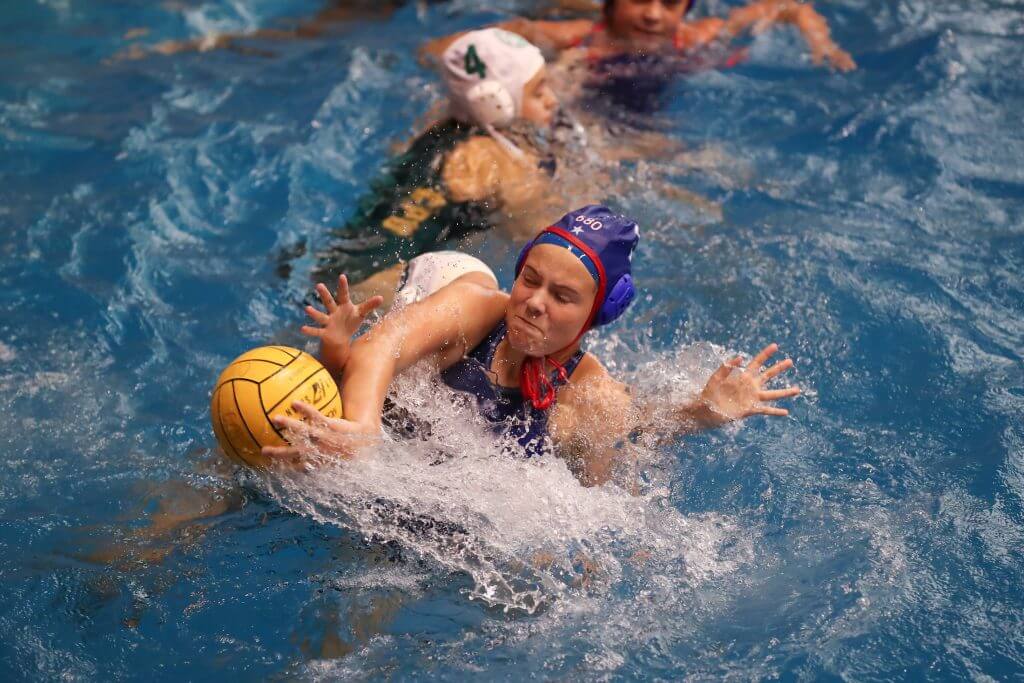
By Michael Randazzo, Swimming World Contributor
Over the past two decades the Champions Cup has sported various identities, including “Speedo Cup,” “Tyr Champions Cup” and “Turbo Champions Cup.” Despite the different names, one important distinction has remained constant; it’s a true 14U national championship, contested by the country’s best age group water polo clubs.
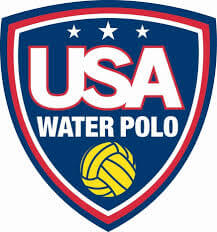
With a stripped-down format consisting of the 12 top teams from USA Water Polo’s 11 geographic zones playing for two days in the fall, the Champions Cup is a distinct contrast to the Junior Olympics, the summer extravaganza that has expanded to 800 boys’ and girls’ teams and hundreds of matches, taking over every local pool wherever in California it’s situated.
Not so with the Champions Cup, which for 2018 was exclusively in one location: Indiana University at Bloomington, possessor of one of the best aquatics facilities in the Midwest.
Overseeing all tournament logistics—as he had done for the past two years, including the 2018 JOs, the largest in the event’s history—was Ryan Cunnane, USA Water Polo’s Director of Events. A former player as well as coach for club (680 Water Polo 18U girls coach—2017 Junior Olympics Platinum winners), high school (San Ramon Valley High School) and college (assistant coach at California State University, East Bay), Cunnane brings a wealth of experience as well as exceptional patience to a task that requires both qualities in ample supply.
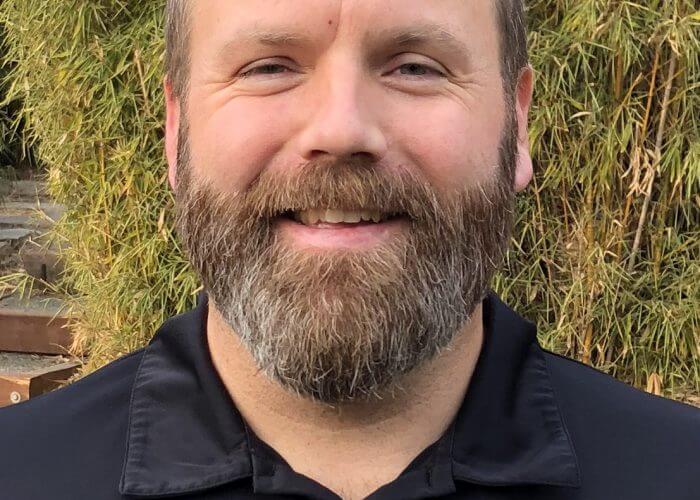
Ryan Cunnane. Photo Courtesy: USA Water Polo
While overseeing tournament play last weekend at IU’s Counsilman-Billingsley Aquatics Center, Cunnane spoke with Swimming World about why a Midwest location for the country’s best 14U teams, similarities and differences between the Champions’ Cup and JOs and how the sport’s growth continues to elevate the quality of polo play throughout the country.
– Why bring all the best 14U girls and boys teams to the Midwest?
One of the benefits is we’re a West Coast-centric sport. And we have teams that participate all over, so having a tournament in the Midwest puts [polo] in the center of the country, which allows East Coast teams easier travel. Plus, it gets West Coast teams away from California.
This tournament is twelve teams for each age group in each zone; all of our eleven zones each get one bid. Depending if another zone—let’s say Florida teams of the Southeast don’t take their bid—that would go to the very next team from the biggest zone with the most athletes.
However the conduct of championships is written determines who’s in the tournament. So you get 12 teams—boys and girls—from all across the country.
It moved to Hawaii two years ago but that was an aberration. It’s usually going to be in the Midwest because that’s the center of the country. One of the benefits is that many impressive Midwest college campuses have great aquatic facilities, and these 14U athletes typically don’t get to see these wonderful college.
One of the other benefits is that IU has a Division I women’s water polo team, and having them come out and see that is a benefit to all.
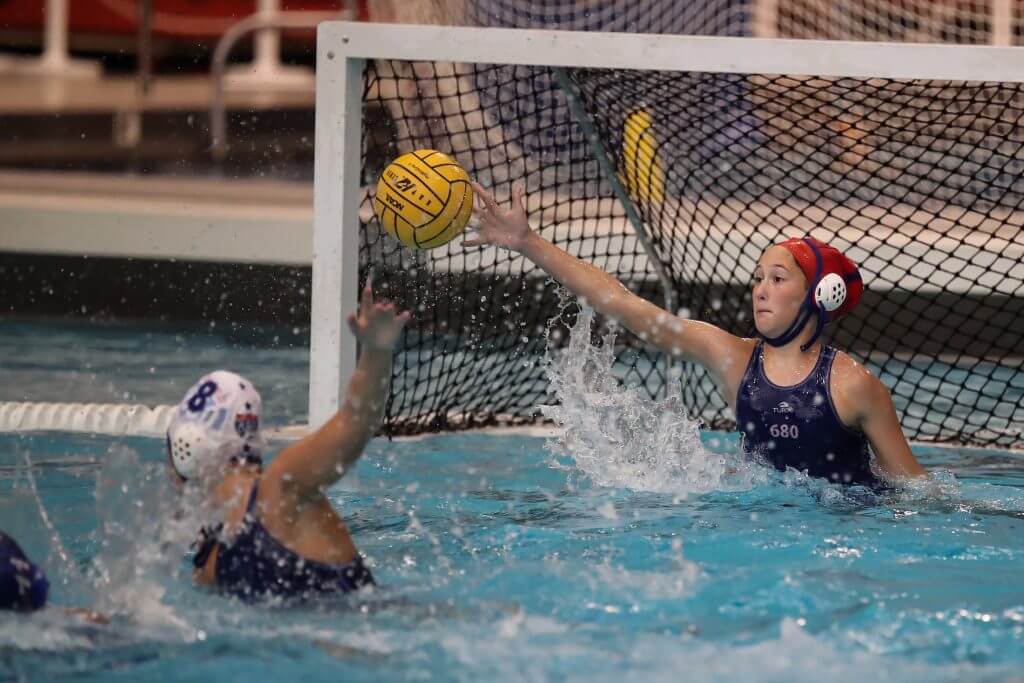
Laurel Cooper, making a big save for 680 Drivers. Photo Courtesy: Catharyn Hayne
– There was a time not so long ago when the Junior Olympics were a regional phenomenon. Would you say that events like the Champions Cup and Rock-tober dovetail with the JOs being an event now fixed in either Northern or Southern California?
The current iteration of Junior Olympics and how we have 700+ teams is really a pool problem. Northern and Southern California have the adequate number of pools to handle the size of Junior Olympics. If Bloomington, Indiana had 35 pools in the metro area, then it would make sense to bring the tournament here.
We attract hundreds of teams from outside of California that come to [JOs]. Just the sheer size and volume of people [means] it has to stay in California until more facilities are found in other areas.
Florida with its weather in late July and its potential for lightning makes it problematic to play outdoors—that’s really the only other area that could do it.
As a player and a coach I’ve participated in the Michigan and the Florida JOs. It’s just grown into its own animal so it has to stay in either Northern or Southern California.
– Only one team from each region is allowed to attend; who determines the pool of competitors for what is a fairly exclusive group of competitors?
Just like any other tournament we send out notification that registration is open. Teams can register if they want to play. If your team is the only participant from your zone, then you get the bid, but in competitive zones that have three or four teams going after one spot they then put on a qualifier which has to be completed—just like Junior Olympics—by a set date, five weeks to a month before the tournament, you must have your qualification completed by that date and you must submit the rankings to the home office.
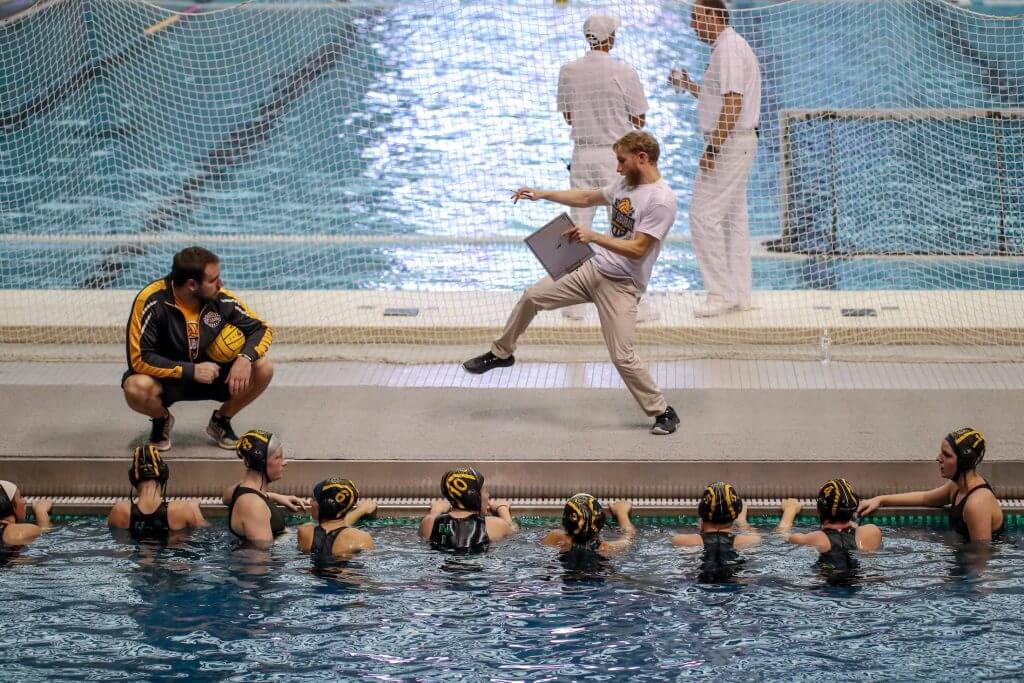
West Suburban (Midwest) with innovative coaching techniques. Photo Courtesy: Catharyn Hayne
It’s similar to Junior Olympics, if the allocation for the zone is not taken up, then we follow the procedures laid out in our document to determine the very next team. For example, the second next team from SoPac [Zone] would take the Midwest Zone’s allocation.
It follows the exact same rules as Junior Olympics.
– Is there any significance to this particular age group?
It’s a traditional tournament that we’ve held in the fall because it’s 14 and under and also because you have to be an eighth grade and under. All over the country, water polo is played either in the fall, winter or spring, so we hold it in the fall, when it’s traditionally been [held], and that’s how we do the tournament.
We have Rock-tober which used to be a 12 and under age group (Boys & Girls divisions) national championship but it’s now a Positive Coaching Alliance coed national championship event.
– How does this tournament—which includes some of the country top age group athletes—fits into the pipeline model of USA Water Polo’s Olympic Development Program (ODP)—a “grassroots to gold medals” approach.
It doesn’t exactly fit the pipeline model—our pipeline for ODP has all the regional camps. We have identification tournaments. We’re doing a first-ever ODP East Regional Championship [January 11-13] which is for teams on the East Coast, teams from the Midwest, teams in the Southeast—who will get to participate.
But pipeline and ODP have their own tournaments which establish who those athletes are. This is where USA Water Polo puts on a national championship tournament. [The Champions Cup] is a tournament that we’ve always done; there’s significant interest every year. We get the very best teams we can find and out on a high-level tournament.
These are some of the next great players in high school and age group water polo. We have dozens of athletes here from all the different teams that play in ODP. Entire rosters of each team are littered with ODP athletes.
– What sort of benefits do individual players and teams get from this, including a Northeast team like Greenwich, which constantly seeks higher-level competition?
That’s the benefit to a team like Greenwich, which does all the things the California teams do, they strive for greatness. [This tournament] gives them an opportunity to take a two-hour flight to play some of the best teams from California, get that experience, get that level of officiating—really mirror some of the great tournaments that are on the West Coast.
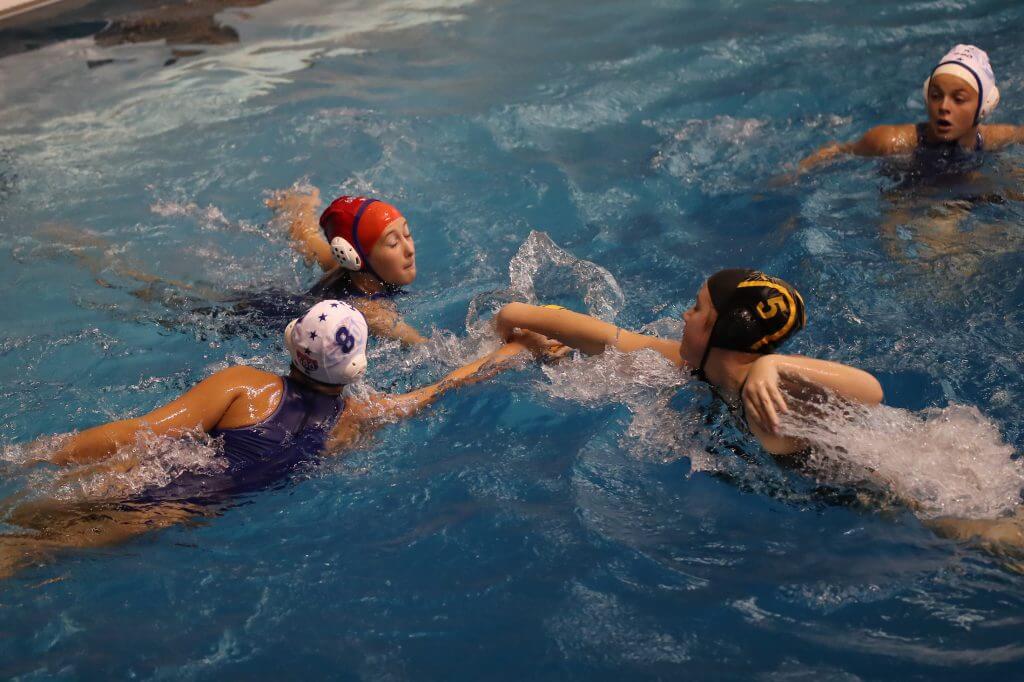
680 Drivers battle West Suburban for the ball. Photo Courtesy: Catharyn Hayne
Putting this on in the middle of the country does give opportunities for teams that are outside to experience that together. There’s a qualification process, then there’s a championship, and it’s got that feel to it—it’s another opportunity to get those high-level games.
– Are there comparisons between this tournament and the vast scale of Junior Olympics?
You have people who are traveling a significant distance and are putting in everything they have to this tournament. It’s similar to the last two days of JOs, where it’s tense; every game means something—everyone’s giving their all.
It’s very competitive, so it’s a fun atmosphere to be around—which makes it great to put on this event in Bloomington. Everyone is a visitor; there’s no home pool here. So you get some really great water polo.
– How does this tournament reflect positive trends for American polo—especially in the Midwest?
There’s a lot of water polo being played all over the place—we’re learning about more and more every day, especially in the Midwest. Outside of California it was a record year for teams coming to Junior Olympics—from the Midwest, the Southeast and the Northeast.
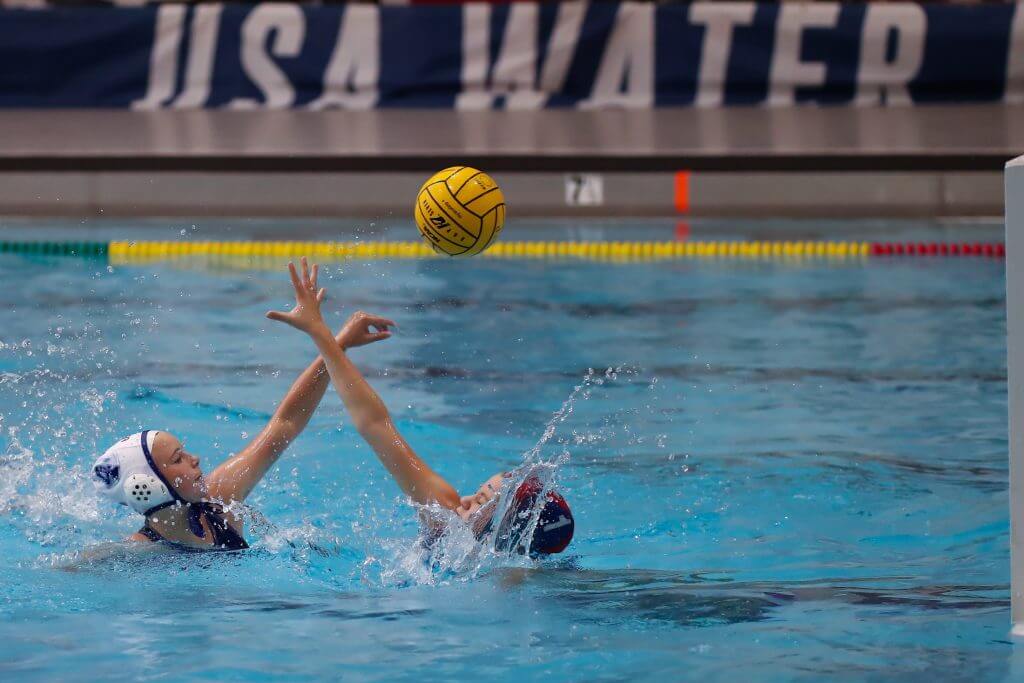
Inspired competition is always in fashion. Photo Courtesy: Catharyn Hayne
We’re seeing those trends; more clubs being formed, more kids joining clubs. We’ve noticed that when we do events outside of California or all the different high school championships that are happening around the country, there’s an uptick in athletes participating. And it’s reflected in ODP as well.
There’s kids who are playing that may not have the schedule or infrastructure to play year-round but we’re seeing a ton of kids participating in ODP because they love the sport and re looking for any opportunity possible to play. You see kids who drive from five hours away to come to a two-day ODP camp in St. Louis or Chicago.



